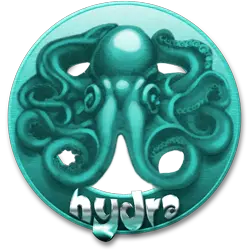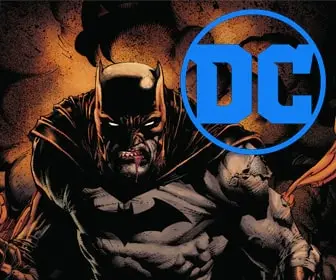
Beyond Outlines: Dive into Contour Drawing
Introduction: Capturing the Essence with Lines – The Art of Contour Drawing

Have you ever looked at a masterpiece and wondered how the artist achieved such a lifelike image? Often, the secret lies in a fundamental technique called contour drawing. This approach isn’t about detailed shading or perfect proportions – it’s about capturing the essence of a subject through the power of line.
Contour drawing is more than just an outline. It’s a way of training your eye to see the subtle curves, angles, and shifts in form that define an object. By focusing on these lines, you develop essential skills like observation, hand-eye coordination, and the ability to translate what you see onto the page. Whether you’re a seasoned artist or just beginning your creative journey, contour drawing is a valuable tool that can help you elevate your drawings to new heights.
The Basics: Grabbing Your Pencil and Taking on the Line
Ready to put your newfound knowledge of contour drawing into action? Let’s gather the essentials!
Materials:
- Paper: Opt for smooth, heavyweight paper that can handle multiple passes with your pencil.
- Pencil: A good quality, sharpened pencil (HB or 2B) is all you need. You can experiment with softer grades (4B or higher) for a looser line later.
- Eraser: While erasing isn’t encouraged in true contour drawing, having an eraser on hand for minor adjustments is always helpful, especially for beginners.
Choosing Your Subject:
For your first foray into contour drawing, simplicity is key. Here are some excellent choices:
- Simple Objects: Fruits, vegetables, coffee mugs – everyday items with clean lines are perfect for practicing line observation.
- Still Life Arrangements: Combine a few simple objects together to create a more complex composition.
- Self-Portrait: This might sound intimidating, but a self-portrait done in contour drawing can be a fun way to explore the lines of your own face.
Mastering the Line:
Now comes the fun part – actually creating the contour drawing! Here are the key techniques to remember:
- Continuous Line Drawing: This is the heart of contour drawing. Aim to keep your pencil in contact with the paper as you draw the entire outline of your subject.
- Slow and Steady Wins the Race: Resist the urge to rush. Take your time, carefully observing the curves and shifts in direction as you move your pencil.
- Eyes on the Prize (or Subject): This might sound counterintuitive, but try to focus most of your attention on your subject, not your drawing hand. Let your hand translate what your eyes see.
Remember, the goal isn’t perfection. Embrace the wobbly lines and unexpected shapes – they’re all part of the learning process! In the next section, we’ll explore some helpful tips and tricks to take your contour drawing skills to the next level.
Tips and Tricks: Taking Your Contour Lines to the Next Level
Contour drawing might seem straightforward, but there’s always room for improvement. Here are some handy tips and tricks to elevate your practice:
- Slow Down and Breathe: Resist the urge to rush through your drawing. Take a deep breath before starting each line, and focus on smooth, deliberate strokes. This will help you capture the subtle nuances of your subject.
- Embrace the Blind Approach (Optional): Once you’re comfortable with basic contour drawing, try the blind contour variation. Here, you keep your eyes on your subject but don’t look at your paper as you draw. This forces you to rely purely on observation and hand-eye coordination.
- See the Negative Space: Don’t just focus on the object itself. Pay attention to the negative space (the empty areas) surrounding it. This can help you define the shape and position of your subject more accurately.
- Vary Your Line Weight and Pressure: Experiment with applying different pressure with your pencil. Lighter strokes can suggest delicate features, while heavier lines can emphasize bold edges.
- Don’t Be Afraid to Make Mistakes: Remember, there are no erasers in true contour drawing! Embrace the imperfections and wobbly lines. They add a sense of life and character to your artwork.
- Practice Makes Progress: The more you practice contour drawing, the more comfortable and confident you’ll become. Set aside some time each day, even if it’s just for a few minutes, to hone your skills. You’ll be amazed at how quickly your observation and drawing abilities improve.
By incorporating these tips into your practice, you’ll be well on your way to mastering the art of contour drawing. Remember, the journey is just as important as the destination. So relax, have fun, and enjoy the process of capturing the world around you through the power of line!
Beyond the Basics: Pushing the Boundaries of Contour Drawing
Contour drawing may seem like a simple technique, but it serves as a powerful foundation for more advanced artistic endeavors. Now that you’ve grasped the core principles, let’s explore some ways to expand your repertoire:
- Line Variation is Your Friend: Experiment with different line types! Go beyond the standard continuous line. Try using broken lines to suggest texture, or employ gestural lines to capture movement and energy.
- Shading Meets Lines: Contour drawing doesn’t have to exist in isolation. Combine it with shading techniques like hatching or cross-hatching to add depth and dimension to your drawings.
- Conquering the Human Form: Feeling ambitious? Apply your contour drawing skills to figure drawing. Capturing the human form with continuous lines can be challenging but incredibly rewarding. It hones your observation skills and helps you understand the underlying structure of the body.
Here are some additional ideas to keep your contour drawing practice exciting:
- Time Yourself: Set a timer and challenge yourself to complete a contour drawing within a specific timeframe. This can help improve your focus and speed.
- Change Your Perspective: Don’t just draw objects straight on. Try drawing them from unusual angles or experiment with perspective to create a more dynamic composition.
- Embrace the Unexpected: Incorporate unexpected elements into your subject matter. Draw a person holding a bouquet of flowers, or add a whimsical background to your still life.
As you delve deeper into contour drawing, remember to constantly experiment and have fun. There are no hard and fast rules – let your creativity guide you! By pushing the boundaries of this technique, you’ll discover its immense potential and unlock new avenues for artistic expression.
Conclusion: Unveiling the Power of Line
So, there you have it! Contour drawing, with its focus on capturing the essence of a subject through simple lines, is a valuable tool for any artist. It refines your observation skills, hones hand-eye coordination, and lays the groundwork for more advanced drawing techniques.
Remember, the beauty of contour drawing lies in its simplicity and accessibility. You don’t need fancy equipment or years of experience to get started. All you need is a pencil, some paper, and a willingness to explore the world around you through the power of line.
So, what are you waiting for? Grab your pencil and embark on your contour drawing adventure! Whether you’re a seasoned artist or just starting out, this fundamental technique has the potential to unlock new creative possibilities and elevate your drawings to the next level. With dedication and a playful spirit, you’ll be surprised at how much you can achieve with just a line. Now get out there, start sketching, and see the world in a whole new light!










